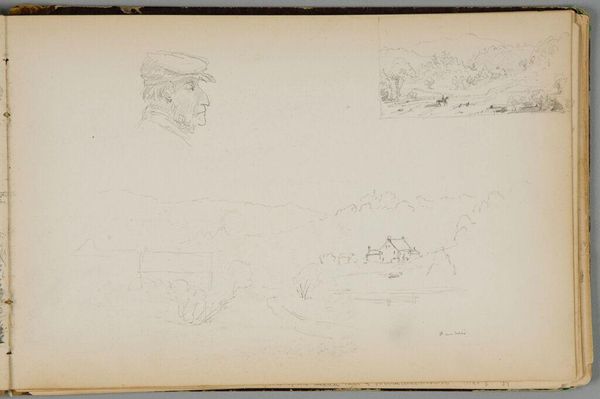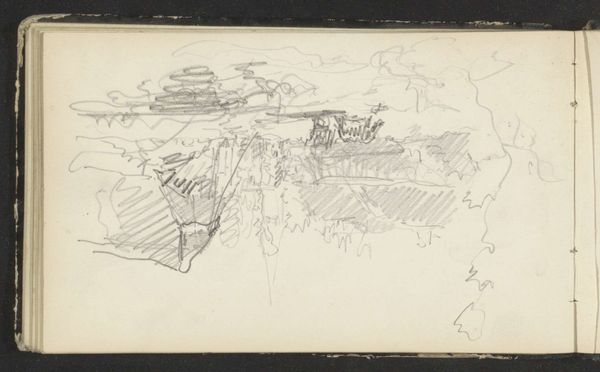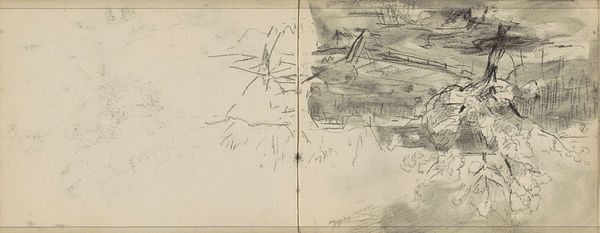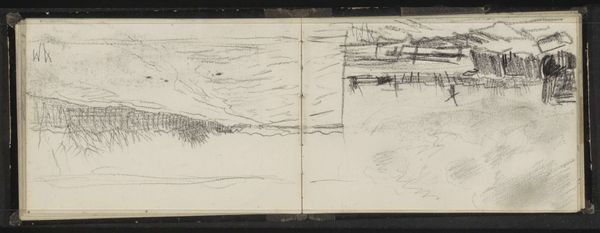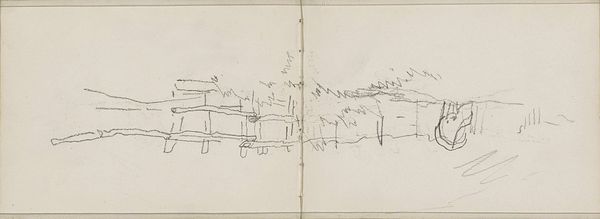
drawing, pencil
#
drawing
#
pen sketch
#
hand drawn type
#
landscape
#
personal sketchbook
#
idea generation sketch
#
sketchwork
#
ink drawing experimentation
#
pen-ink sketch
#
pencil
#
pen work
#
sketchbook drawing
#
sketchbook art
#
realism
Dimensions: height 104 mm, width 179 mm
Copyright: Rijks Museum: Open Domain
Editor: So, this is Willem Cornelis Rip’s "Landschap met water bij Kamerik en een hooiberg," from between 1895 and 1898. It looks like a set of quick sketches, probably in pencil or pen, in what I'm guessing was a sketchbook. It feels really informal and immediate. What do you see in this piece, looking at it from your perspective? Curator: I see more than just an informal landscape study. Think about the late 19th century—rapid industrialization, urbanization transforming the Netherlands. For artists like Rip, sketching "en plein air," as they say, wasn't just about capturing pretty scenes; it was about staking a claim to a disappearing way of life, an agrarian existence. The "hooiberg," the haystack, becomes a symbol. What does it evoke for you? Editor: It feels almost nostalgic, a record of something that was already changing rapidly at the time. A bit melancholic, maybe? Curator: Exactly! And think about who had the luxury of recording these landscapes. Access to art education and materials was heavily skewed by class and gender. So, these sketches, while seemingly simple, also implicitly speak to a certain social position and power. How do you think we should address that when we present the piece? Editor: That’s a great point. We should definitely acknowledge the privilege inherent in creating art at that time. It adds a whole other layer to appreciating these landscapes. Instead of just pretty scenery, it’s tied into issues of class and access, right? Curator: Precisely. By recognizing the socio-economic context, we prevent romanticizing rural life and connect the work to broader issues of representation and power. Now, I have new eyes for these sketches, how about you? Editor: Definitely! It's about connecting art to bigger conversations, to who gets to tell these stories and why. I appreciate you shining a new light on that.
Comments
No comments
Be the first to comment and join the conversation on the ultimate creative platform.



